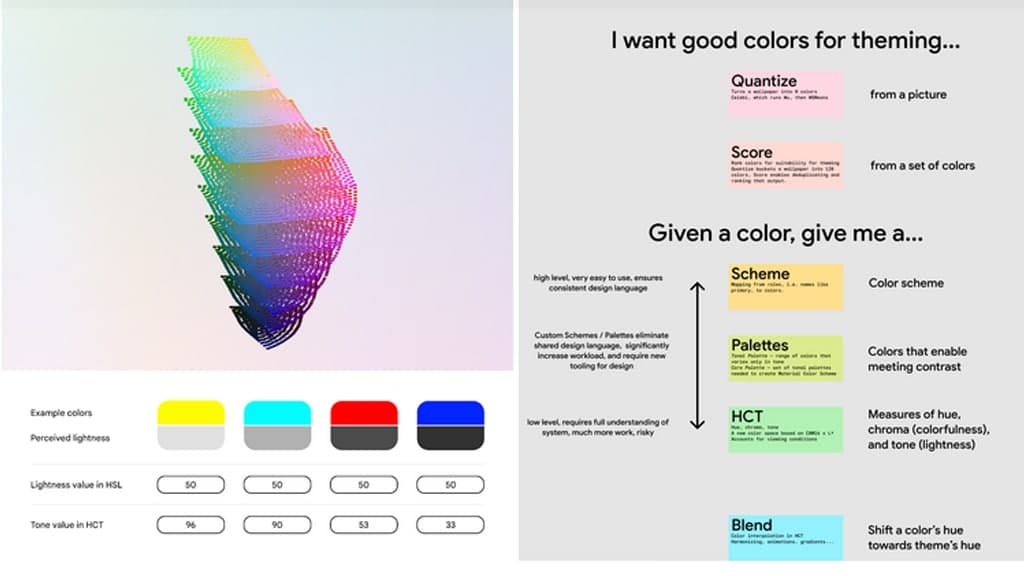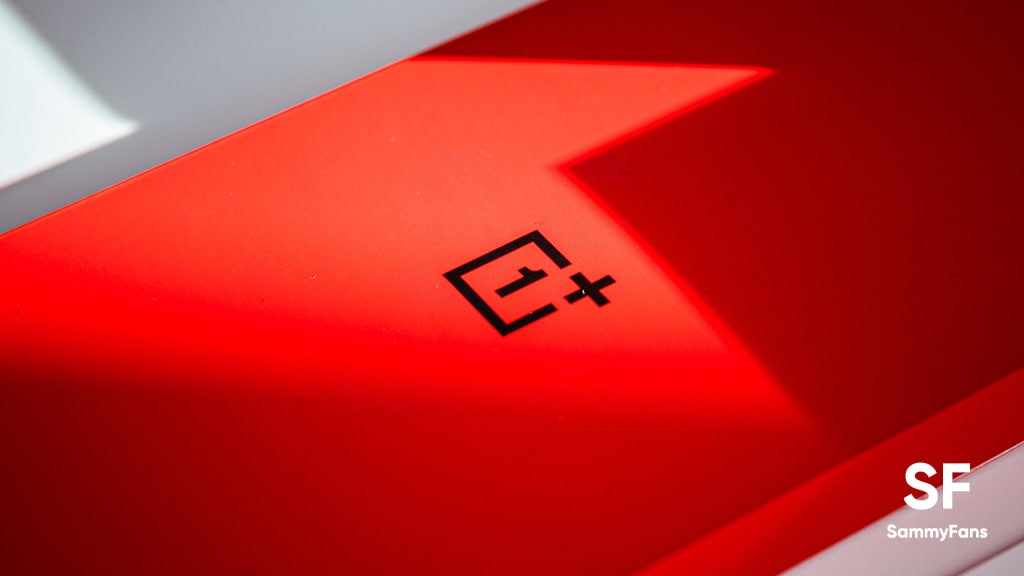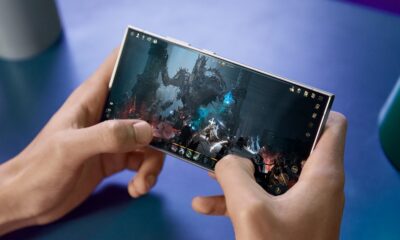News
Google Android 12 Material You Dynamic Color source code released, coming to iOS as well

Google’s Android 12 operating system comes with a lot of new features in the town, meanwhile the all-new Material You is the most outstanding characteristics. While Samsung has already adopted the Material You Dynamic Theming for Galaxy devices, Google just released its source code.
According to the official info (via 9to5Google), the Dynamic Theming function will be widely used on smartphones running the Android 12 operating system as Google is open-sourcing the Material Color Utilities code library. Moreover, the open-source library also coming to iOS in near future.
Join SammyFans on Telegram

Through an explainer about the “Science of Color & Design, James O’Leary explained how the Android maker created a “perceptually accurate” color system to replace the current HSL (hue, saturation, lightness) method. The HSL technique was “built to make computing colors fast on 1970s computers.”
“For the first time, designers have a color system that truly reflects what users see, taking into account a range of variables to ensure appropriate color contrast, accessibility standards, and consistent lightness/colorfulness across hues.”
For smartphone vendors, the Material You Color Utilities cross-platform code library is equipped with everything they need to implement Dynamic Color. As of now, it’s available in Dart, Java, and Typescript, while Google could expand it to iOS, CSS via SASS, and GLSL shaders.
Here’s how the Android 12 Material You Dynamic Theming engine works:
First, the wallpaper is quantized, reducing the thousands of colors in it to a smaller number by merging them in color space. The reduced color set is small enough to run statistical algorithms against with efficiency.
These algorithms are used to score and filter colors; Android 12 gives colors points for colorfulness and how much of the image they represent, and it filters out colors close to monochrome.
One color, defaulting to the top-ranked color by the algorithm, or chosen by the user in the wallpaper picker, becomes the source color.
Its hue and chroma influence the overall color scheme, enabling a vibrant blue scheme, or a muted green one, based on the user’s choice of color.
Using the source color, we create the core palette, which is a set of 5 tonal palettes. A tonal palette is defined by a hue and chroma; the colors in the palette come from varying tones.
These tonal palettes reduce cognitive load for designers when creating a design system: instead of specifying hue and chroma for each role, a tonal palette can be substituted.
Finally, we fill out the table that defines the hue chroma and tone of each color role, then use those values and HCT to create the colors used in the theme.
News
Samsung teams with Sapphire to power smart homes in the US

Samsung is partnering with Sapphire to power smart homes through SmartThings in the US. The company officially announced its collaboration with Sapphire Connected Communities.
The collaboration with Samsung will allow Sapphire to offer apartment residents a familiar and feature-rich experience through the SmartThings app.
The upgraded platform will also ensure the delivery of an integrated management solution for property managers that improves operating efficiency across an entire portfolio of properties.
“Together, SmartThings and Sapphire will redefine the apartment living experience,” said Mark Benson, Head of SmartThings US.

Sapphire Connected Communities is an enterprise software company that has built the first multifamily smart apartment solution on the SmartThings Pro B2B development platform.
Sapphire is the first Multifamily Residential solution to leverage Samsung’s SmartThings Pro. It enables the platform to offer multifamily customers a standards-based, integrated solution.
The company vows to provide a platform that not only enhances the resident experience but is more cost-effective, providing users with a return on their investment in tech they will use daily.
“Our partnership with SmartThings represents a significant milestone in delivering a cost-effective, reliable smart apartment solution,” said Eric DeJesus, Director of Operations at Sapphire.
News
OnePlus joins Android 15 race with OxygenOS 15 announcement; Samsung lagging due to delay in One UI 7

Samsung and OnePlus, two companies in the Android ecosystem, are taking different approaches with their Android 15 update rollout plans, and tech fans are talking about it.
OnePlus has officially confirmed, via an announcement on its social media account and its community forum, that the Android 15-based OxygenOS 15 beta program is coming on October 24th, 2024. The upcoming OxygenOS update will probably bring a refreshed design inspired by iOS, featuring fresh lock screen customization choices and an updated UI.
Devices like the OnePlus 12 and OnePlus Open will be first in line to get the OxygenOS 15 update by mid or late November, with other models following soon after.
With the OxygenOS 15 announcement, OnePlus now joins other leading manufacturers in rolling out Android 15. The smartphone companies like Google, Vivo, Motorola, Nothing, and ROG have already started the stable or beta rollout.
However, Samsung, a key contributor to the Android OS ecosystem, has delayed the One UI 7.0 beta program, causing it to lag in its update schedule. This delay has upset the Samsung Galaxy users waiting for Android 15, as Samsung is taking time to ensure the OS stability rather than rushing updates.
While Samsung hasn’t rushed to release a beta or full update like OnePlus, the company is expected to bring significant visual and functional changes.
As per official information, the Android 15-based One UI 7.0 stable update won’t be available until 2025. The company is going to bring the stable full-featured One UI 7 with the Galaxy S25 series next year.
News
Samsung launches 24Gb GDDR7 DRAM with record speed for AI, GPU

Samsung developed the 24Gb GDDR7 DRAM for AI and next-gen GPU. The company’s advanced GDDR7 memory chipset introduces faster speed and enhanced power efficiency to become an optimum solution for next-generation applications.
The South Korean tech giant also announced that the validation for the 24Gb GDDR7 in next-generation AI computing systems from major GPU customers will begin this year, with plans for commercialization early next year.
24Gb GDDR7
Thanks to high capacity and powerful performance, Samsung’s latest memory chip will be widely utilized in various fields. It’s a pretty big induction in fields that require high-performance memory solutions, such as data centers and AI workstations.
Beyond that, the GDDR7 will also be utilized beyond the traditional applications of graphics DRAM in graphics cards, gaming consoles and autonomous driving. It minimizes current leakage by using power gating design tech to boost operational stability.
Samsung claims that the GDDR7 achieved industry-leading speed for graphics DRAM of 40 Gbps, a whopping 25% boost over its predecessor. The performances can also be enhanced to up to 42.5Gbps, depending on the usage environment.
The company has also expanded mobile SoC-inspired methods such as clock control management and dual VDD design. It’s aimed at reducing unnecessary power consumption, improving power efficiency by over 30%.













